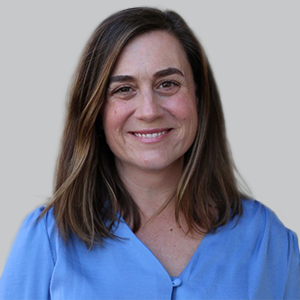News
Article
SomnoRing Appears Usable and Acceptable to Assess Sleep Health in Diverse Populations
Author(s):
Recent research highlights how advanced technology like remote monitoring devices or wearables and smartphone-based apps for sleep health can be delivered at the point of care to meet the needs of patients.
Courtney Lyles, PhD

In a recent study published in JMIR Formative Research, findings from a 7-night experiment among a group of racially, ethnically, and socioeconomically diverse patients with sleep disorders perceived the SomnoRing (Somnology) as useful for tracking sleep and more comfortable compared with other wearable sleep devices.1 These findings suggest the potential for wearables like SomnoRing to improve sleep health among marginalized patient populations.
All 21 participants (English speaking, n = 12; Spanish speaking, n = 10) with sleep disorders owned a smartphone, almost all (90.5%, n = 19) felt comfortable with using their phone, and few already owned a wearable device (28.6%, n = 6). Of the total number of participants, 15 (68%) reported wearing the SomnoRing continuously for 7 days during the study period and found it comfortable.
“This study highlights the importance of conducting usability and acceptability studies with patients from marginalized communities upfront, rather than considering adaptation of wearable devices or apps at a later date,” coauthor Courtney Lyles, PhD, associate professor in the UCSF Division of General Internal Medicine at Zuckerberg San Francisco General Hospital said in a statement.1 This study explored the usability and acceptability of a wearable sleep monitoring and its accompanying mobile app among racially, ethnically, linguistically, and socioeconomically diverse participants in a safety net clinic.
Led by Larissa Purnell, MPH, senior operations manager of specialty service design and commercialization at Galileo, the trial recruited English-and Spanish- speaking patients from a multidisciplinary clinic that served publicly insured patients in California between February 2021 and December 2021. Eligible patients had an initial evaluation of obstructed sleep apnea while the study excluded those with primary insomnia or other suspected sleep disorders. Following the test of the SomnoRing device over the study period, participants were asked to share their perceptions of the device, including motivators and barriers for use, as well as general experiences with digital health tools in a 1 hour-long semistructured web-based qualitative interview.
Four themes emerged from the collected interview. Above all, the SomnoRing was easy to use in comparison with other wearable devices or traditional home sleep testing alternatives, for example, the standard polysomnogram technology used in sleep studies. The second theme observed was the patient’s context and environment, such as family and peer influence, housing status, access to insurance, and device cost that impacted the overall acceptance of the device. Thirdly, the theme of the clinical champions motivated use in support of effective onboarding, interpretation of data, and ongoing technical support. The last theme was that participants wanted more assistance and information to effectively interpret their own sleep data summarized in the device’s app.
Limitations of the study included some gaps in the data collection and the participants’ lack of clarity about the SomnoRing app’s role in the study. Since the study was conducted during the COVID-19 pandemic, the sleep clinic adapted practices and carefully screened patients, excluding infected patients from the analysis. Given that the app for the SomnoRing was not ready for inclusion in the study, it was not emphasized as part of study’s protocol. Despite this, patients used the app regardless at the start and end of the monitoring periods, taking an interest in the app’s data and metrics, which then influenced their experience and feedback overall.
All told, that participants also uncovered some external barriers in relation to the perceived usefulness of the technology, including housing status, insurance coverage, and clinical support. It was noted that the Technology Acceptance Model can provide a useful framework to assess how these technologies are accepted among targeted groups such as safety net populations. Investigators stressed that in the future, more research is needed on the usability and context of use of these devices, specifically in real-world clinical practice, to better inform people on how to integrate these technologies into sleep interventions and care operations.2




